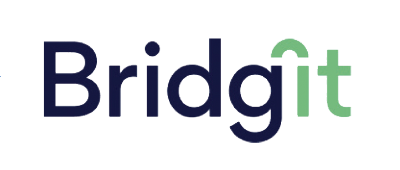A word from Bridgit
Bridgit, founded in 2021, is a non-bank lender revolutionising property lending via bridging loans. With a technology-first approach, the lender designs bridging products that meet the needs of their partners and Australian borrowers.
Bridgit aims to empower Australian home owners to access their hard-earned property equity to make progress. In doing so, home owners can enjoy the benefits of bridging, skip temporary living, never miss an opportunity, and buy their next dream home on their terms.
The company also looks to improve the process of bridging finance lending with a tech suite that includes a custom-built partner portal, where brokers can submit applications, manage deals in real-time, and access tools and resources in one place.
In this environment, timing can make the difference between landing the dream home and having to settle for that other place underneath a flight path due to market pressures.
Australians are looking for flexibility, speed, and certainty when it comes to home ownership, because of the competitive environment we live in
Aaron Bassin, CEO, Bridgit
For house hunters who need the sale of one property to come through before they can secure another, aligning settlements has always been a challenge and adds risk. The dynamics of a competitive housing market makes getting the timing right even harder as houses are snapped up quickly and buyers compete to outmanoeuvre the other.
It’s perhaps unsurprising then that short-term bridging loans have become an increasingly popular option for borrowers.
Bridgit, a non-bank lender specialising in bridging-style finance, has started the new financial year seeing a 375 per cent increase in broker applications (volume of broker applications in July and August 2024 versus July and August 2023), according to CEO Aaron Bassin.
“The economic environment we’re in – high interest rates, shortage of supply, competitive tension among home owners – those things are leading towards the increase in demand for bridging [loans],” Bassin says.
But there’s also been a shift in perception in terms of the way bridging loans are used. What was once a back-up option is now part of a prudent strategy.
“Traditionally, Australians would look at trying to align settlements. That was always one of the options. Another option is to sell first and move in with family or rent while searching for the next home. And they’re all very stressful and expensive. We’re now seeing [bridging finance] as a first choice,” Bassin says.
“Australians are looking for flexibility, speed, and certainty when it comes to home ownership, because of the competitive environment we live in.”

Access and opportunity
In a 2022 Bridgit survey of over 1,000 Australian mortgagors, over one in three (35 per cent) said they missed out on securing a property while waiting for finance approval.
Fast forward two years and a competitive housing market means house hunters still can’t afford to sit on their hands. Mortgage brokerage Loan Market noted a 23 per cent increase in the number of home loan pre-approvals in August ahead of the spring selling season, for example, while data from research firm CoreLogic showed a steady rise in the number of spring listings this year – 8.8 per cent higher than the five-year average.
Housing affordability adds another dynamic to the mix, with levels becoming the worst on record in FY24, according to a September report from PropTrack, REA Group’s data business.
According to PropTrack’s data, a medium-income household (earning $112,000) was able to afford just 14 per cent of all homes sold.
Stephen Doyle, head of distribution at Bridgit, says these changing market dynamics have seen bridging loans become an important part of many home buyer’s strategies.
“[Australian] people are generally asset rich and cash poor,” Doyle says.
“The majority have their money tied up in that property. So, the solution – and a lot of people seem to have the same plan – is to rely on the equity in your property, which is worth a certain amount of money, and downsize into your new home.
“And then you cash in on the growth. You then have that sum of money to be able to retire on as well. What bridging does is it facilitates that [plan] and empowers the home owner to make that next step.”
Even if housing pressures ease and it becomes easier to step to the next rung of the property ladder, Bassin expects demand for bridging loans to remain as home owners move to this as their preferred strategy for their next purchase.
“As soon as we start to see interest rates reduce, we’re going to see a huge surge in property activity,” Bassin says.
“There’ll be more competitiveness. And this type of solution is a powerful tool to help brokers meet the demands and needs of their clients, particularly in a changing landscape.
“A lot of customers want to unlock equity in their homes to be able to do more things with it, and that’s what this product allows us to do, is to utilise the wealth in their properties.”
Bridging the gap
Doyle says the beauty of bridging, particularly for brokers who want to stay in residential, is that it provides a way to diversify without learning the ins and outs of a completely different finance class.
“Everyone talks about diversification. They talk about commercial. They talk about leasing. But that’s a whole new line of business they have to go into,” Doyle says.
“When you look at bridging, you’re still dealing in residential property. You’re diversifying your options within the space you actually deal with, that you’re already an expert in. Plus it is such a simple and easy solution for brokers now to offer.”
Another advantage for brokers who add bridging to their repertoire is it allows them to offer a broader range of solutions for their referral partners.
“If you can say to a real estate agent, ‘I can assist you to facilitate the sale of two properties rather than one,’ you’re going to work a lot better than with that referral partner,” Doyle says.
“The opportunity for brokers not only for their own existing database, but also for referral partners, is enormous when you use bridging.”
The non-bank lender says brokers are key to helping borrowers access alternative solutions and it will continue to showcase the benefits of integrating bridging loans into their offering.
“We now have 12,000 fully accredited brokers across a number of aggregators,” Doyle says. “The whole focus of our business is very much making sure we service the broker and making sure bridging is simple to offer. [This means] they’re looked after and we give them solutions that benefit their end clients.”
For Bassin, bridging loans give brokers the opportunity to improve their business through diversification, simplicity, and new referral opportunities.
“What bridging allows a broker to do is to get the best bridging product and then place the customer in the most appropriate home loan,” Bassin says.
“[Bridging loans] help increase their opportunity of earning, but also make sure the customer’s interest always comes first.”




